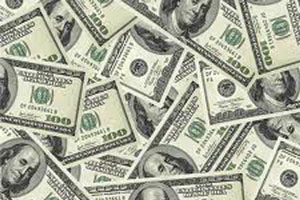
NEW YORK — The United States dollar tumbled against the yen on Friday after the Bank of Japan (BoJ) left its monetary policy unchanged, while benchmark US bond yields fell to near 4-1/2-month lows after the US economy grew less than expected in the first quarter.
Report by Reuters
The disappointing growth rate spurred concerns about a tepid outlook for the US which, along with recent concerns that China’s growth is slowing, also hit the price of oil.
Brent crude fell to just above $103 a barrel after rising $3 in the past two sessions.
China and the US are the world’s two largest oil consumers.
The BoJ held off from announcing new monetary policy on Friday, which was not unexpected, but board members suggested inflation may still fall short of the central bank’s target for some time.
The outlook on inflation in the bank’s semi-annual economic report highlighted concerns that the BoJ has an unrealistic goal in its battle to end 15 years of deflation.
The BoJ’s announcement in early April of plans for $1,4 trillion in new monetary stimulus triggered a sharp selloff in the yen. However, traders said market expectations for ongoing weakness in the yen had come too far, too quickly. Recent lackluster US data has added to dollar selling, which accelerated on Friday.
- Chamisa under fire over US$120K donation
- Mavhunga puts DeMbare into Chibuku quarterfinals
- Pension funds bet on Cabora Bassa oilfields
- Councils defy govt fire tender directive
Keep Reading
“The selling started to feed on itself, and everyone started to jump on the selling bandwagon,” said Charles St-Arnaud, foreign exchange strategist at Nomura Securities in New York.
The dollar fell as low 97,54 yen and was down 1,2% at 98,02 in late New York trade.
US gross domestic product (GDP) expanded at a 2,5% annual rate in the first quarter.
While that was a jump from the tepid growth seen in the final quarter of last year, it disappointed expectations for a 3% pace.
The data and weakness on Wall Street lifted bond prices, with 30-year treasuries up 28/32 at 105-07/32 to yield 2,862%. The benchmark 10-year note’s yield fell to 1,665%, just a shade higher than the low of 1,643% reached earlier in the week.
“The thoughts about slower growth and disinflation have been mostly priced at these levels,” said Mike Cullinane, head of treasuries trading at DA Davidson in St Petersburg, Florida.
“If we were to see another month of weak data, we could see yields grind lower.”
The data could raise doubts about the ability of the economy to absorb government spending cuts and higher taxes and may fuel speculation of the possibility of more Federal Reserve measures to boost growth, or at least keep the Fed’s current stimulus plans in place.
Wall Street ended little changed in light volume, with a slight loss on the S&P 500 ending a five-day winning streak for the index.
“We traded off a decent amount after the GDP number but we didn’t break any technical levels or really didn’t get much momentum in the selloff past late morning,” said Paul Zemsky, head of asset allocation at ING Investment Management in New York.
“I guess there was some bottom fishing. There was so much fear of poor earnings going into earnings season that this is still somewhat of a positive surprise.”











